I got this for a song during the end of the summer of 2010 - up in Kingston, NY. $200 with a crummy chainsaw case. I figured it would be worth it just for the Floyd.
So this started off as a Charvel Model 3A, black with a Floyd Rose replacing the stock trem and a J-50N in the neck instead of the stock J-80NC. It had been modified for two mini switches as well. The head stock had been nicked in the back, and the body was pretty well roughed up, some nicks and gouges all about.
The whole guitar - looks pretty good, don't it?
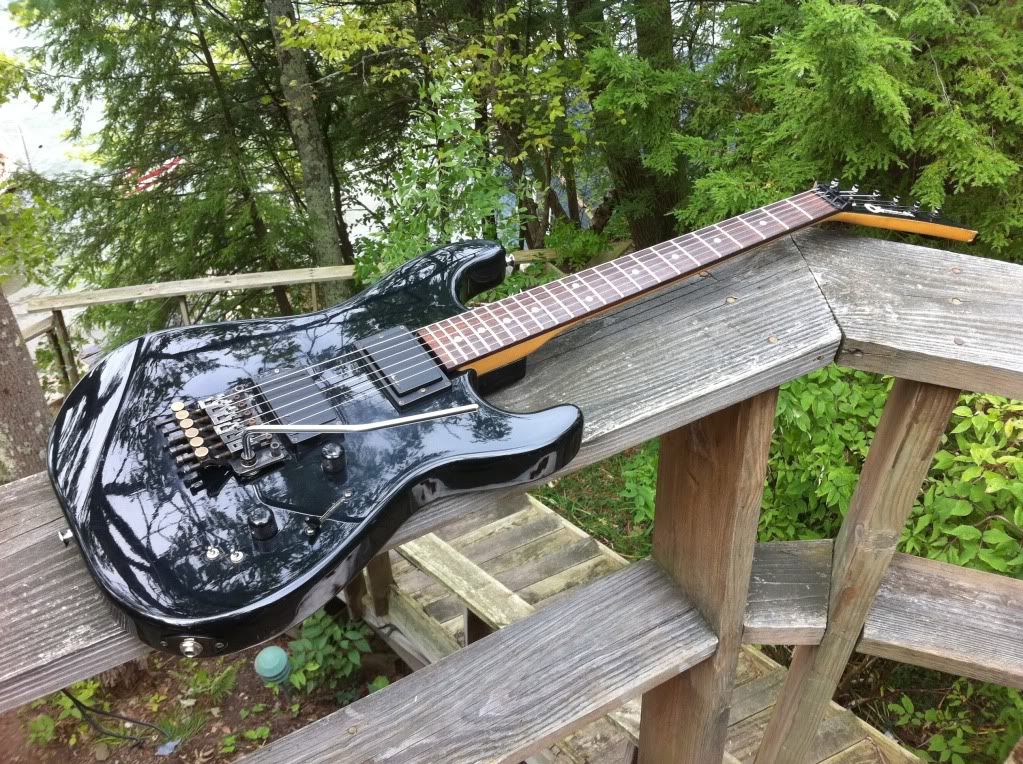
I'm a big fan of H-H guitars, so I instantly liked the looks of this. The Model series featured a lot of HSS guitars, and my last favorite - a Model 4, was killing me with the HSS and the three mini switches - so this one with the blade switch struck me right
Front of the headstock - not bad
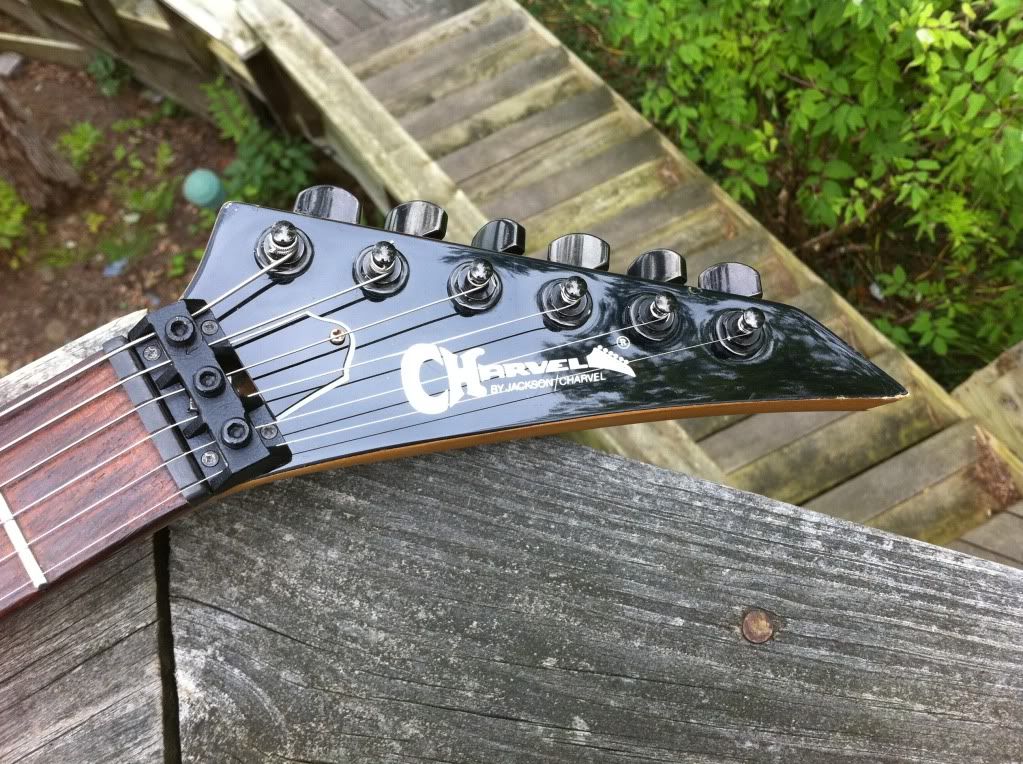
The string lock was trashed. It had a "replacement" pad in the middle and the housing was worn so the strings slipped anyway.
Back of the headstock - a common sight
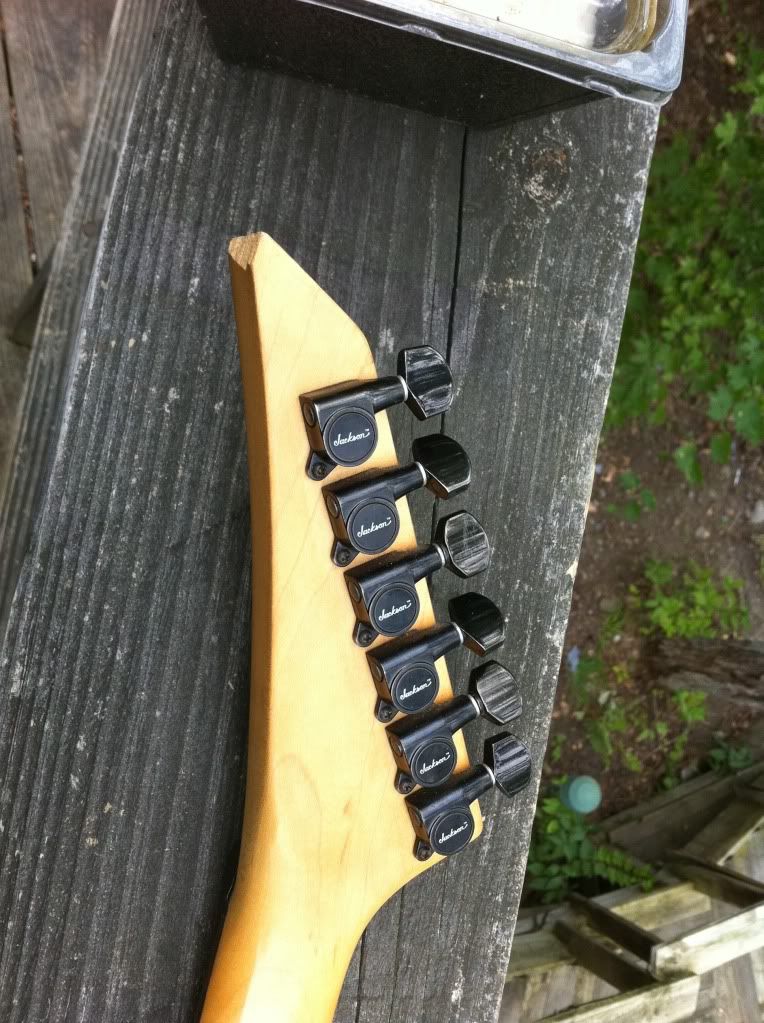
Here you can see the very common chipped headstock. Most old pointies are probably afflicted thusly. This would be the single biggest reason why I would choose to resto-mod this axe
Biggest selling feature
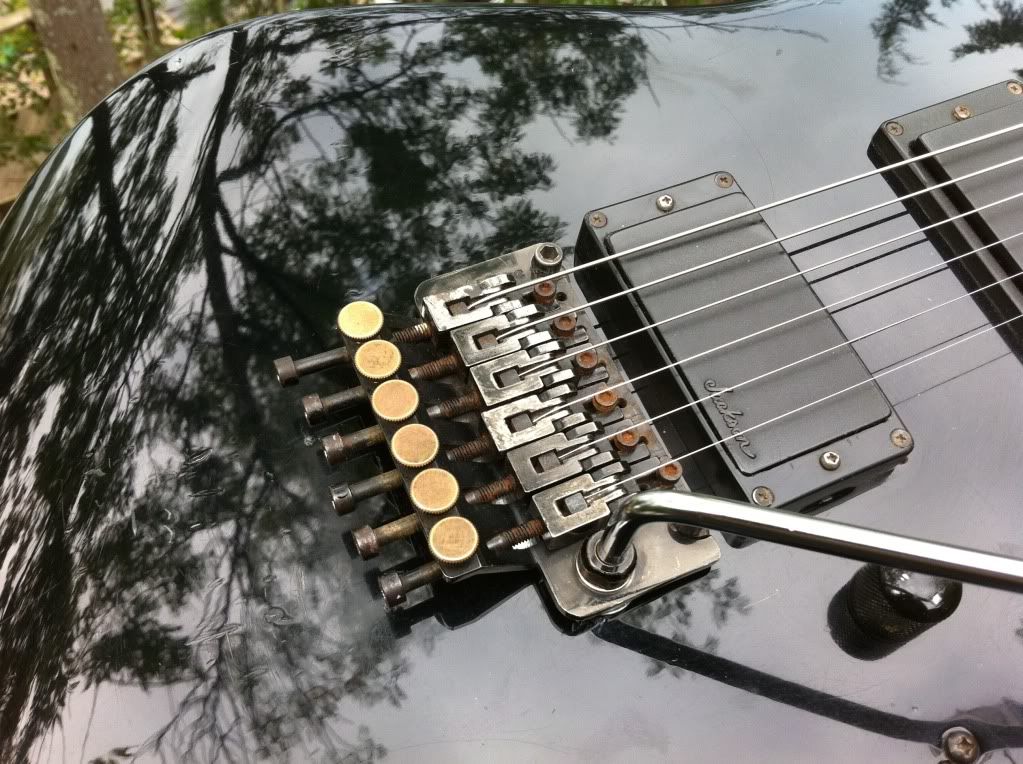
Older Floyd. How old? Who knows? I dug that it was all worn out - this would turn out to be a pain in the ass! You can also see the replaced bridge humbucker ring - they carved out the sides to fit the oversized Jackson humbucker - and of course - made more holes in the body to mount it.
Dings and donks
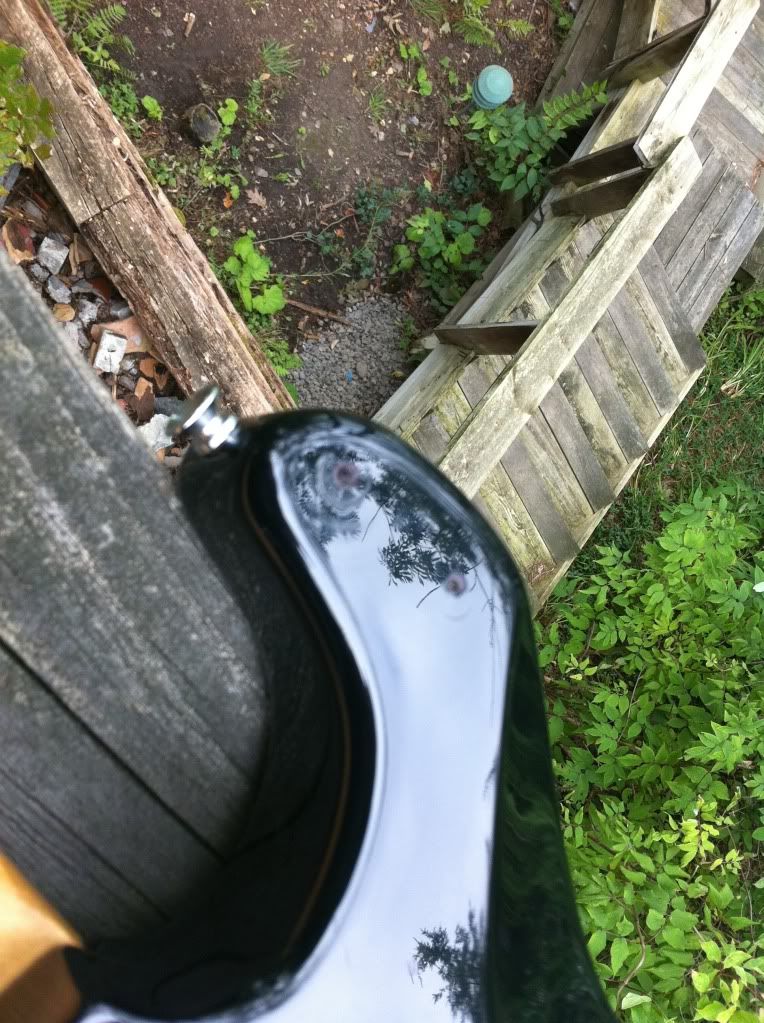
Some genious thought that if moving the strap pin behind the upper horn was a good idea - a great idea was to do it twice!!!
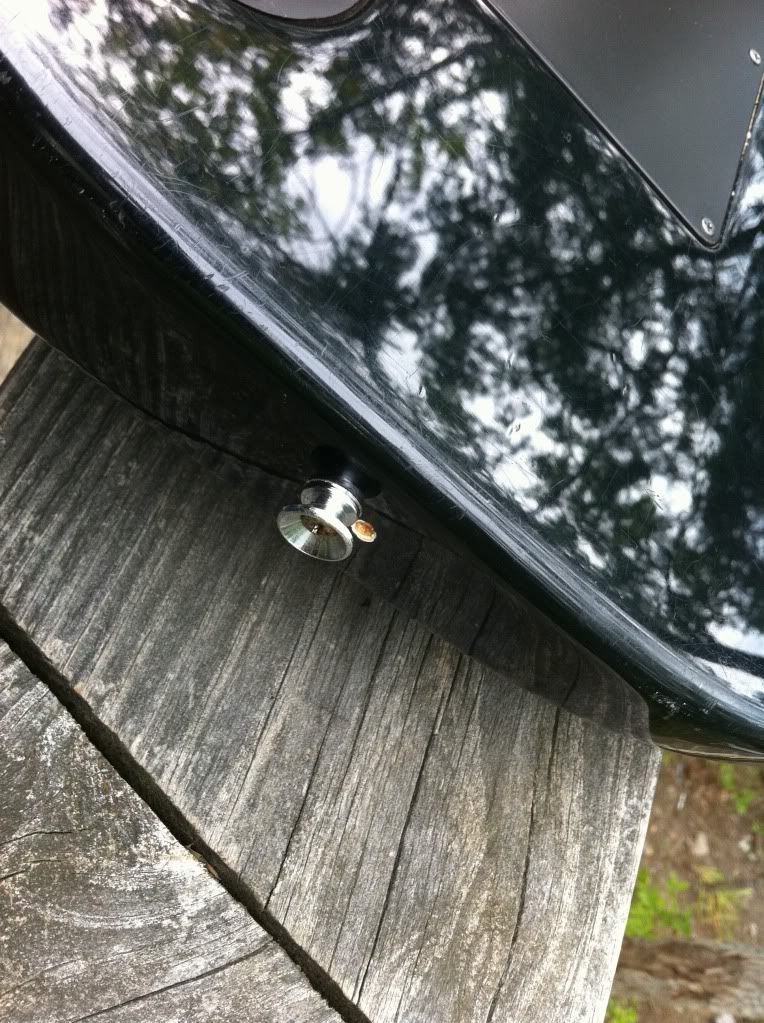
And of course the extra hole at the bottom strap pin - this I have less of a problem with - shit happens and strap pins pull out
They had wired the switching oddly - it had the stock super-switch and the two minis that seemed to be a coil cut but only in positions 2 & 4 and there was some series-parallel nonsense going on to. They had tried to create an "everything axe" - a concept which I find distasteful overall.
Anyway, the pickups really didn't sound that great, but I was convinced it had something to do with the switching - I figured I was in parallel instead of series or in phase when I should be out of phase.
The important thing to me was that it played well - in spite of poorly finished frets, bad pickups and a wonky string-lock - it still played very smoothly, sang and vibrated against me as I played it. It was actually one of those rare moments when you just start playing a guitar and it feels right.
NEXT: Time to rip it apart